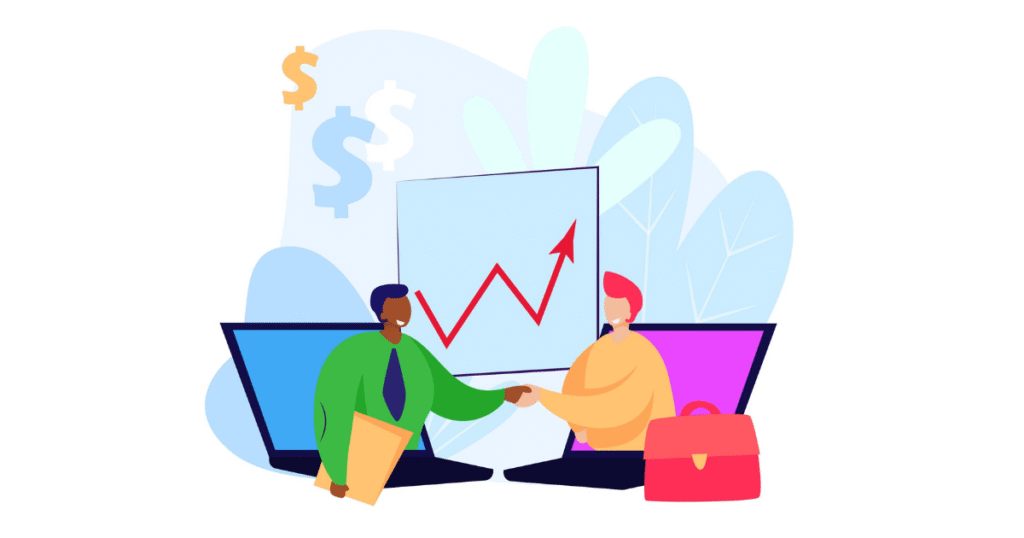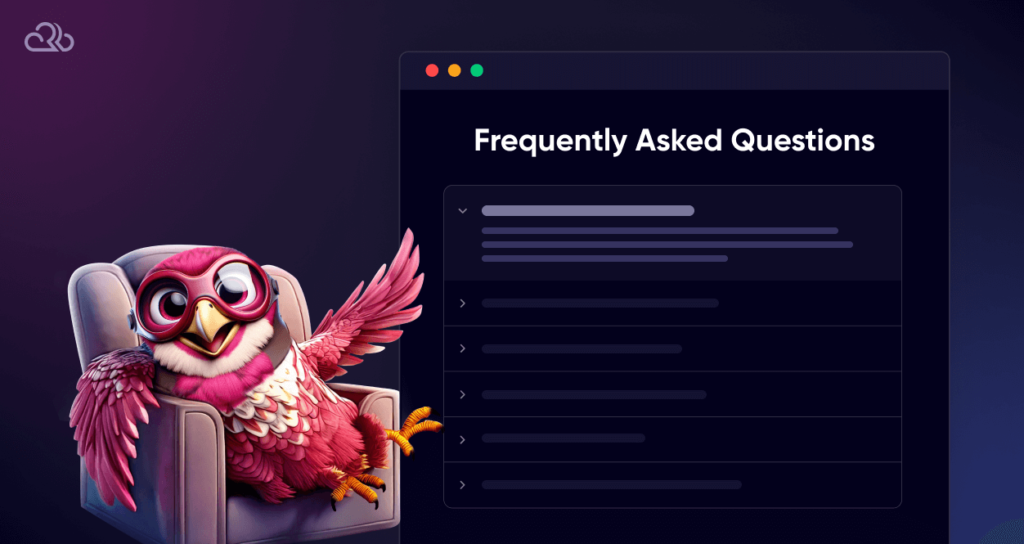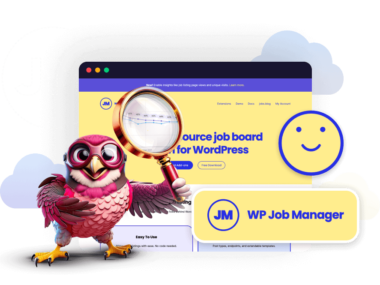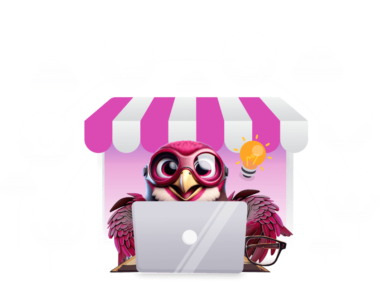Remember when you started your business and were thrilled to get any client? Yeah, me too. The days of doing a happy dance over a $50 sale seem like a distant memory now. But here’s the thing: there comes a point when chasing a hundred small clients starts feeling like herding cats through a thunderstorm.
That’s when you realize maybe it’s time to go after the big fish.
High-ticket sales aren’t just about adding zeros to your price tag. They’re about fundamentally changing how your business operates, who you serve, and honestly, how much sleep you get at night.
What Makes a Sale “High-Ticket” Anyway?
Let’s get real for a second. High-ticket doesn’t just mean “expensive”, it means valuable.
In my 10+ years at Rapyd Cloud, I’ve seen businesses slap premium prices on mediocre products and wonder why nobody’s biting. Spoiler alert: a $3,000 price tag doesn’t automatically make something worth $3,000.
Here’s my practical definition: A high-ticket offer is typically:
- Starting at $1,000 minimum (though this varies wildly by industry, what’s “high-ticket” for a freelance writer might be pocket change for an enterprise software company)
- Solving a significant problem or creating a meaningful transformation
- Requiring an actual conversation before purchase (no “Buy Now” button is closing this deal)
The magic of high-ticket sales is beautifully simple: sell fewer things at higher prices to people who actually value what you do. Revolutionary, right?
High-Ticket Products That Fetch Real Dollars

I’ve seen some interesting attempts at high-ticket offers over the years. But the ones that actually work tend to fall into a few categories:
Luxury Products: The Rolex example is overdone, but it works for a reason. People aren’t just buying a timepiece; they’re buying the subtle nod from across the boardroom that says, “I’ve made it.” The same goes for that Tesla you keep eyeing.
Transformative Services: Someone I know charges $25,000 for their business coaching program. Insane? Not when their average client sees a $100,000 increase in revenue. That’s not a cost, it’s an investment with a clear ROI.
Enterprise Solutions: At Rapyd Cloud, we’ve seen enterprise clients happily pay higher prices for custom infrastructure because the alternative is bleeding money through inefficient hosting solutions every month. When you can quantify the cost of not buying, price becomes secondary.
Property & Big-Ticket Items: My realtor friend makes the same commission selling one luxury home as she would selling five starter homes. Guess which one takes less time and emotional labor? (Hint: it’s not the five transactions with first-time homebuyers freaking out about every small detail.)
Why You Should Consider The High-Ticket Route (From Someone Who’s Been There)
Look, I get it. The idea of charging premium prices can trigger a weird case of impostor syndrome. But let me share why targeting high-ticket clients changed everything for us at Rapyd Cloud, and why it might do the same for you.
1. The Math Makes Life Better
Remember algebra? Yeah, me neither, but this equation is simple:
5 clients × $10,000 = 50 clients × $1,000
Same revenue, but drastically different workload. When we shifted to a high-ticket model, our support tickets dropped by 70% while our revenue stayed the same. I literally got my Sundays back. That alone was worth it.
2. Better Clients, Better Sleep
Here’s something they don’t tell you in business school: clients who pay more complain less. Counterintuitive, right?
Our $99/month clients would email at 11 PM demanding immediate fixes for problems they created. Our $10,000/month clients schedule calls, come prepared with questions, and send holiday gifts. The difference is night and day (and significantly fewer midnight panic attacks).
3. Your Brand Gets an Automatic Upgrade
There’s something psychological that happens when you start attracting premium clients. Other premium clients start noticing. It’s like when one celebrity starts wearing a particular brand, and suddenly all their celebrity friends are wearing it too.
When we landed our first Fortune 500 client at Rapyd Cloud, three more followed within six months, without us changing a thing about our marketing. The snowball effect is real.
Inside the Mind of Your High-Ticket Client
Before you can sell to high-ticket clients, you need to understand how they think. And trust me, they don’t think like bargain hunters.
They’re Buying Outcomes, Not Features
Nobody spends $10,000+ because your platform has a cool dashboard. They spend it because they believe you’ll deliver a specific outcome that matters deeply to them.
Our highest-paying client didn’t care about the price tag or the dashboard. They cared that their CEO wouldn’t be embarrassed in front of the board again because the website had crashed during quarterly presentations. Specific outcome > general feature.
They Take Their Sweet Time (And That’s OK)
The sales cycle for high-ticket items is much longer. But here’s the upside: once they’re in, they’re usually in for the long haul. Our average client retention jumped from 7 months to 3.2 years when we shifted to high-ticket services.
They Want the White Glove Treatment
High-ticket clients expect customization. They don’t want to feel like they’re getting the same solution as everyone else, even if, let’s be honest, the core offering is pretty similar.
At Rapyd Cloud, we create custom onboarding experiences for our premium clients. Same product, same features, but a tailored implementation process that makes them feel special. Worth every minute of extra planning.
Trust Is Non-Negotiable
Before someone hands you a five-figure check, they need to trust you deeply. And not just “I trust this person won’t steal my money” but “I trust this person understands my business and can deliver exactly what I need.”
This is why authority-building isn’t optional in the high-ticket space, it’s mandatory.
How to Attract High-Ticket Clients (Without Being Sleazy)
Alright, let’s get to the good stuff. How do you actually find and attract these mythical beings with healthy budgets and reasonable expectations?
1. Get Specific About Who You’re Looking For
“Everyone with money” is not a target market. At Rapyd Cloud, we specifically target Ecommerce, Membership sites, and Enterprise technology companies with 50+ employees who have outgrown their initial infrastructure.
The more specific you get, the easier it becomes to speak directly to your ideal client’s pain points. Generic messaging attracts generic clients.
2. Become Unavoidably Credible
High-ticket clients need to see you as the obvious expert, not just another option. This isn’t about claiming expertise, it’s about demonstrating it relentlessly.
Some ways we’ve built credibility:
- Publishing detailed case studies (with real numbers)
- Creating thought leadership content that challenges industry norms
- Speaking at events our target clients attend
- Maintaining a strong, opinionated presence in industry conversations
The goal is simple: when your ideal client has the problem you solve, your name should automatically come to mind.
3. Network Like Your Business Depends On It (Because It Does)
Cold outreach can work for low-ticket sales. For high-ticket? Not so much.
Most of our premium clients came through relationships, either direct connections or referrals from existing clients. This is why I spend at least 20% of my work week nurturing relationships with no immediate sales agenda.
Pro tip: Focus on becoming a connector. When you regularly help others find opportunities or solve problems, they remember you when opportunities come their way.
4. Give Away Your Best Stuff
This might sound counterintuitive, but hear me out. When we started sharing our most valuable insights for free, the stuff we used to guard closely, our perceived value skyrocketed.
Our detailed guide on “Cloud Infrastructure Mistakes That Are Costing You $10K+ Monthly” generated more high-ticket leads than any paid advertising we’d done previously.
High-value clients aren’t looking to get everything for free. They’re looking for evidence that you know your stuff. Give them that evidence generously.
Closing High-Ticket Deals Without Feeling Like a Car Salesman

You’ve attracted their attention. Now what? Here’s how to close without the ick factor.
1. Master Consultative Selling
Forget pitching. High-ticket sales are about consultation. Our sales process involves at least two discovery calls before we ever talk numbers. We’re genuinely trying to understand their business challenges and determine if we’re the right fit.
Sometimes we refer prospects elsewhere because we know we’re not their best option. This has resulted in some of our strongest referral partnerships.
2. Address Objections Before They Come Up
After hundreds of sales conversations, you start to notice patterns. We now proactively address the top three objections our clients typically have:
- “Isn’t this more expensive than [competitor]?” (We discuss value and ROI immediately)
- “What if implementation disrupts our operations?” (We outline our transition process)
- “How quickly will we see results?” (We set realistic timelines upfront)
This approach builds trust and shows we understand their concerns.
3. Make Taking Action Ridiculously Easy
Decision fatigue is real, especially for busy executives. We’ve simplified our onboarding process to three clear steps with minimal input required from the client.
The easier you make it to say “yes,” the more likely you’ll hear it.
The Bottom Line
Landing high-ticket clients isn’t about fancy sales tactics or psychological manipulation. It’s about becoming genuinely valuable to a specific group of people with specific problems and the budget to solve them.
High Ticket clients or high ticket sales will change your work satisfaction, your client relationships, and yes, your bank account. Is it right for your business? Only you can answer that, but if you’re tired of the hamster wheel of endless small sales, it might be time to cast a smaller net for bigger fish.
FAQs From Real Businesses Making the Switch

How do I know if my business is ready for high-ticket clients?
If you’re consistently delivering great results, getting positive feedback, and feeling stretched thin by managing too many small clients, you’re probably ready. Start by creating a premium tier for your existing services before pursuing entirely new clients.
Won’t I lose business by raising my prices?
Yes, and that’s actually the point. You’ll lose the clients who don’t value your work enough to pay premium prices. Our client roster shrank by 60% when we raised prices, but our revenue increased by 35%. Work less, earn more, that’s the whole game.
How long does it typically take to land your first high-ticket client?
In our experience, the typical timeline from strategy shift to first high-ticket client is about 3-6 months. It takes time to reposition your brand, create the right content, and nurture relationships. Patience pays off literally.






